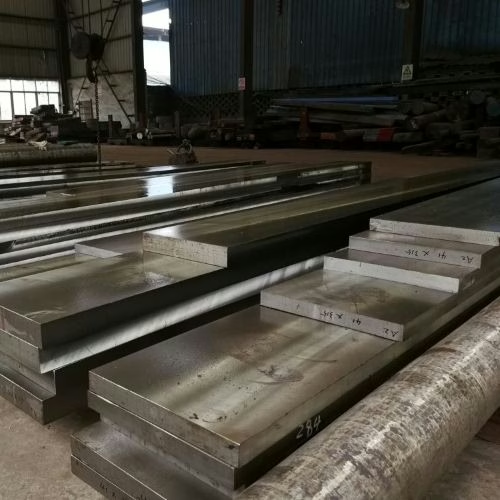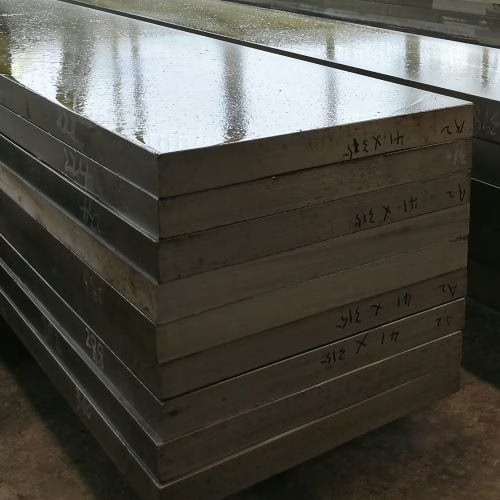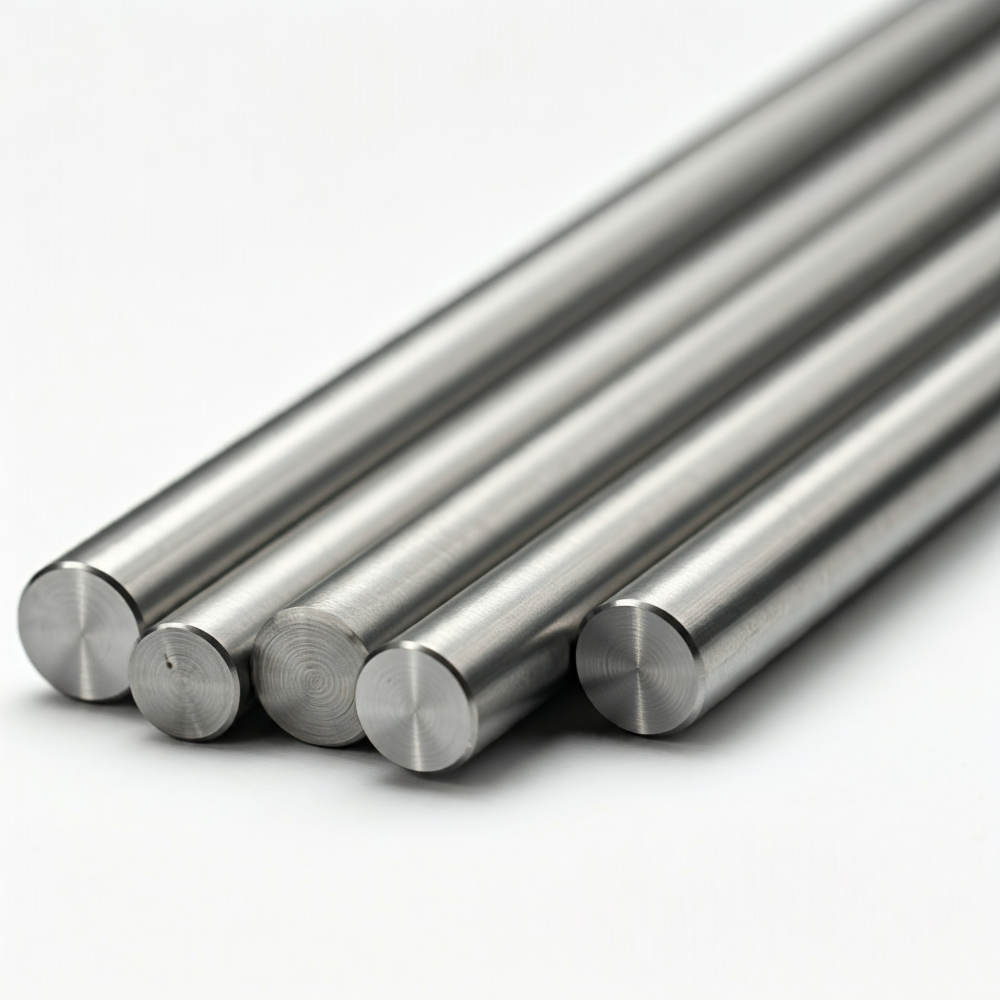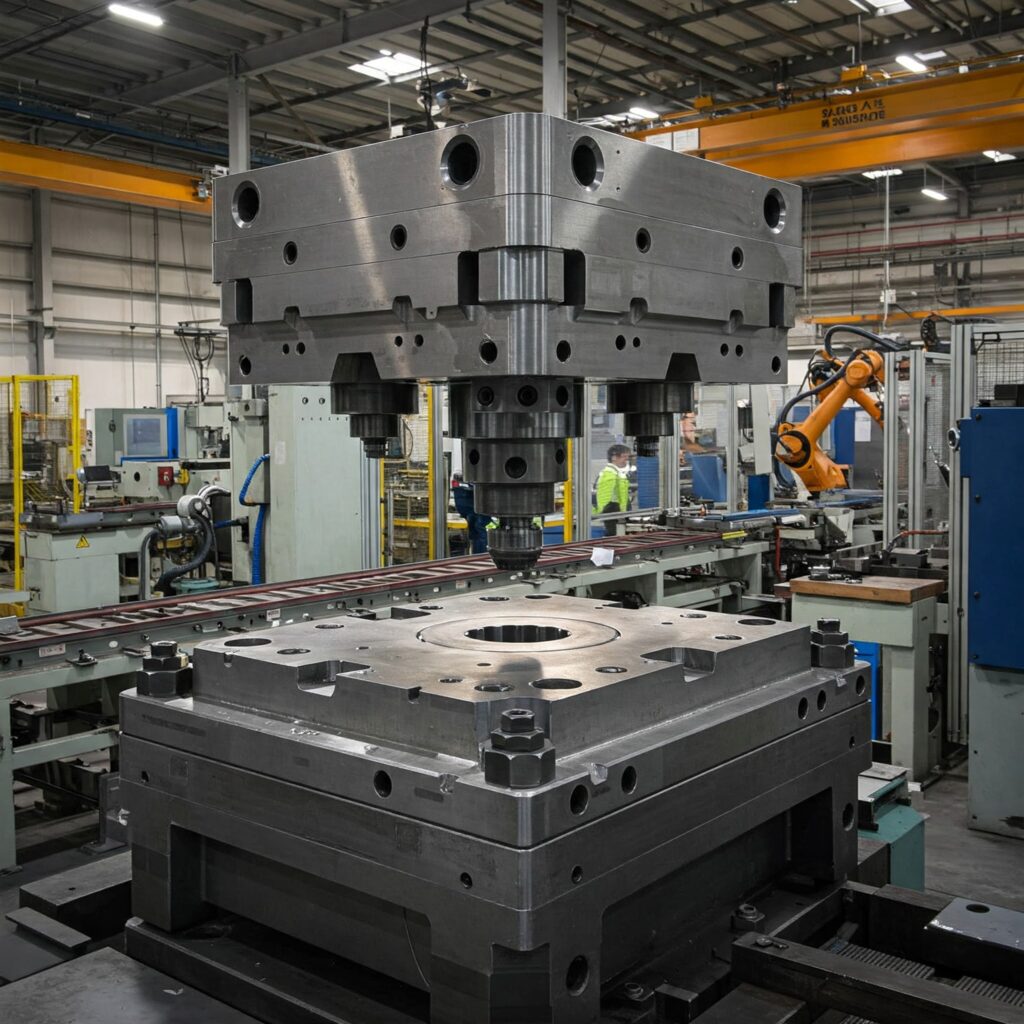Estimated reading time: 9 minutes
Key Takeaways
- A2 tool steel is widely used for its balance of wear resistance and toughness, making it ideal for high-precision tools.
- Understanding A2 Tool Steel Distortion involves recognizing the causes, such as thermal stress, residual machining stress, and part geometry.
- The heat treatment process for A2 includes preparation, hardening, quenching, and tempering to minimize distortion.
- Proper safety protocols are crucial during A2 steel heat treatment, emphasizing PPE and furnace safety measures.
- Common problems like warping, cracking, and low hardness can often be addressed through careful processing and design considerations.
Table of contents
AISI A2 tool steel is an air-hardening medium-alloy cold-work tool steel that is widely used, offering a favorable balance between wear resistance and toughness. Currently one of the most popular tool steels in the United States, it is commonly employed in high-precision tool manufacturing, such as gauges, precision measuring instruments, and complex dies for forming, blanking, and drawing operations. A2 steel is an air-hardening grade that can be quenched in air, offering high hardenability that makes it suitable for machining into intricate precision components. The advantage of air quenching lies in minimizing material distortion and enhancing dimensional stability during the critical austenite-to-martensite transformation, providing greater quenching safety compared to water-quenched grades.
Understanding Distortion
What is Hardening?
Hardening is a heat treatment process designed to increase the hardness and strength of steel. For tool steels, this process typically involves three steps: austenitizing (heating to form austenite), quenching (rapid cooling to transform austenite to martensite), and tempering. The primary aim is to develop high hardness, which improves wear resistance and cutting ability. A key prerequisite for hardening is forming austenite, which dissolves carbides and is the high-temperature phase. When rapidly cooled (quenched), this austenite transforms into martensite, the fine-grain, hard matrix structure in steels.
The Three Main Causes of Distortion
Distortion refers to unexpected or inconsistent changes in size and shape that occur during heat treatment. It is a complex issue, with three primary contributors:
- Thermal Stress: This arises from temperature gradients established during heating or quenching. Differential expansion or contraction occurs because a part’s surface heats or cools faster than its interior, inducing stresses. The generally uniform cooling characteristics of air-hardening steels, such as A2, help minimize this issue compared to liquid-quenched grades.
- Residual Machining Stress: These stresses originate from cold-working operations, such as machining or grinding. These “locked-in” stresses are released by plastic deformation when the steel is heated and its yield strength is lowered, potentially causing distortion, bending, or twisting. Stress relieving after rough machining is necessary to mitigate this cause.
- Part Geometry: The design of the component has a significant influence on distortion. Features such as sharp corners, abrupt section changes, and thin walls hinder uniform heating and cooling, thereby increasing the risk of cracking and warping.
Size Change vs. Shape Change
Distortion manifests in two principal forms: size change and shape change. Size change refers to the irreversible volumetric variation (growth or shrinkage) primarily caused by changes in crystal structure and phase transformation volume. This expansion occurs when an annealed microstructure is converted to martensite. Size changes are generally predictable for a given steel type; for example, A2 tool steel, when air quenched from the proper hardening temperature, is expected to expand approximately 0.001 inches per inch. Shape change, also known as warpage, involves changes in geometrical form such as bending or twisting. It primarily results from non-uniform thermal and transformation stresses or the relaxation of residual stresses.A2 tool steelA2 tool steel plates


The 5-Steps for Minimal A2 Tool Steel Distortion
Step 1 – Preparation and Stress Relief
Rough machining of A2 steel induces plastic deformation and high surface strain in the annealed microstructure. When these stresses combine with thermal and phase transformation stresses during subsequent quenching, they may cause significant deformation or cracking in the A2 material. To eliminate these inherent stresses, stress relief treatment is strongly recommended between rough machining and finish machining.
Slowly and uniformly heat unquenched A2 tool steel to 1200-1250°F (649-677°C). The workpiece must be held at this temperature for a duration calculated as 4.7 minutes per millimeter of thickness. After soaking, it must be slowly cooled to room temperature within the heating furnace.
Step 2 – The Austenitizing Heat
The hardening process begins with Austenitizing, where the steel is heated to form austenite, the necessary prerequisite for achieving the martensitic (hardened) structure. The heating rate must be carefully controlled; fast heating can cause distortion or cracking due to temperature differentials (thermal gradients) developing between the surface and the core.
To ensure temperature uniformity and minimize thermal shock, a two-step approach is typically used for tool steels, although A2 primarily relies on an initial preheat. After preheating, the temperature is rapidly increased to the final austenitizing temperature, which for A2 is typically in the range of 1697-1796°F (925-980°C). Please note that too low limits carbide dissolution and reduces hardness, while too high causes excessive retained austenite, lowering hardness and risking cracking. The standard soak time for A2 is approximately 1 hour per inch (25 mm) of cross-section, ensuring homogeneity without causing undesirable effects from excessive soaking.
Step 3 – The Quench (Air Hardening)
A2 is an air-hardening tool steel. Air hardening significantly reduces the strain intensity and thermal shock experienced by the steel, thereby minimizing deformation and enhancing crack resistance.
The cooling process should be performed in still room air, ensuring adequate space for uniform air movement. To prevent surface decarburization, A2 steel can be sealed in stainless steel foil. As with all air-hardening steels, the full hardenability of A2 steel is limited by section size; sections exceeding 4 inches (102 mm) typically fail to achieve full hardening during air cooling.
For such massive sections, an alternative such as Flash Oil Quenching may be used, where the part is immersed in oil only until the visible red heat (around 1000°F or 540 °C) dissipates, followed by cooling in still air to 150°F (65°C). Regardless of the quenching method, the goal is to cool the part to 150°F (65°C) (but not lower) to allow the martensite transformation to proceed, and then immediately transfer it to tempering.
Step 4 – The “Snap” Temper
After quenching A2 steel, the workpiece must be immediately transferred to the tempering furnace when the temperature reaches 150°F (65°C). Transfer must be swift; otherwise, the newly formed martensite will render the steel in a high-stress brittle state. If tempering is not performed promptly, the retained austenite will stabilize at room temperature or spontaneously transform into brittle untempered martensite, leading to uncontrollable dimensional changes and cracking.
Step 5 – Final Tempering
Tempering eliminates internal stresses, enhances toughness and ductility, and promotes dimensional stability by transforming retained austenite. For A2 tool steel, multiple tempering cycles are required to achieve optimal properties.
The typical tempering temperature for A2 steel is 400°F (205°C), with a holding time of 2 hours per inch (25 mm) of section thickness. The recommended secondary tempering temperature for A2 steel is 375°F (190°C), 25°F (14°C) lower than the initial tempering temperature. This process refines the grain structure, enhances toughness and tool life, and is particularly suitable for parts with complex geometries.
Critical Safety Protocols for A2 Steel Heat Treatment
Personal Protective Equipment (PPE)
All operations dealing with molten metal must involve careful consideration of operator safety. Required Personal Protective Equipment (PPE) for heat treating includes a hard hat, a face shield (worn over safety glasses), insulated gauntlet gloves, and protective high-temperature coats or aprons (such as aluminized or leather). Foot protection requires steel shoe protectors or high-top leather boots with steel shields. When operating salt bath furnaces, shields, gloves, aprons, and eye protection must be worn by personnel who should also be carefully instructed in handling poisonous cyanide-containing salts. Personnel must also be trained in the safe operation and maintenance of all equipment.
Furnace and Environment Safety
The achievement of successful heat treatment properties relies upon the appropriate choice of furnace and the type of atmosphere maintained inside. Controlled atmospheres are necessary to protect the steel surface from oxidation and decarburization. Proper venting of the furnace and rinse tanks to the outdoors is recommended for safety against fumes and spattering and to minimize corrosion in the work area. When using exothermic or endothermic gases for atmosphere control, these gases must not be introduced until the furnace temperature reaches or exceeds 1,400°F (760°C) to avoid the risk of explosion. Furnace temperatures must be evenly controlled, and loading must be balanced to minimize distortion and thermal stresses. Good housekeeping in the working and safety lane areas is also essential.
Handling Hot Steel Safely
Highly heated parts, especially when they are above the transformation temperature, become slippery on their surface and must be handled with extra care. Hot parts are always handled with long gripping tongs, and it is advisable to have two pairs available. The tongs should be warmed before grasping the hot part to reduce thermal shock and stress to the steel. When immersing parts and workpiece support fixtures into molten salt baths, preheating them is critical to drive off any moisture and prevent spattering. Additionally, molten nitrate-nitrite salts must not come in contact with nitriding salts in the molten state, as this contact will result in an explosion. If straightening hot steel above 400°F (205°C), protective equipment is imperative, as the steel is highly unstable in this condition.
Troubleshooting: A Quick Guide to Common Problems
Problem 1: The Part Warped or Twisted
Causes: Warping results from the release of existing mechanical stresses (from machining) or from large thermal/transformation gradients.
Solutions: Stress relieve the component before hardening, ideally at 1200–1250°F (649–677°C). Ensure uniform heating using the necessary 1200°F (650°C) preheat to equalize temperature. A2’s air-hardening characteristic inherently minimizes distortion compared to liquid-quenched steels.
Problem 2: The Part Cracked
Causes: Cracking stems from localized stresses exceeding the material’s strength, often initiated at design flaws such as sharp corners or holes. Overheating during austenitizing leads to coarse grains, embrittlement, and increased susceptibility27….
Solutions: Temper immediately after quenching to 150°F (65°C) to relieve high residual stresses, preventing delayed cracking. Avoid sharp corners and abrupt section changes in design.
Problem 3: Hardness is Too Low
Causes: Low hardness may be caused by surface decarburization or inadequate soaking time. Additionally, if the austenitizing temperature is too high, excessive retained austenite forms.
Solutions: Because A2 is susceptible to decarburization, protect the surface with foil or a controlled atmosphere to prevent this issue. Double tempering (400°F then 375°F) is crucial for converting retained austenite into fresh martensite, thereby enhancing the final hardness and stability of the tool.
If you have any questions about A2 tool steel or would like to purchase it, please don’t hesitate to contact us. Our company, AoboSteel, possesses over 20 years of industry experience in forging tool steel, with a deep understanding of tool steel and extensive practical application expertise.


